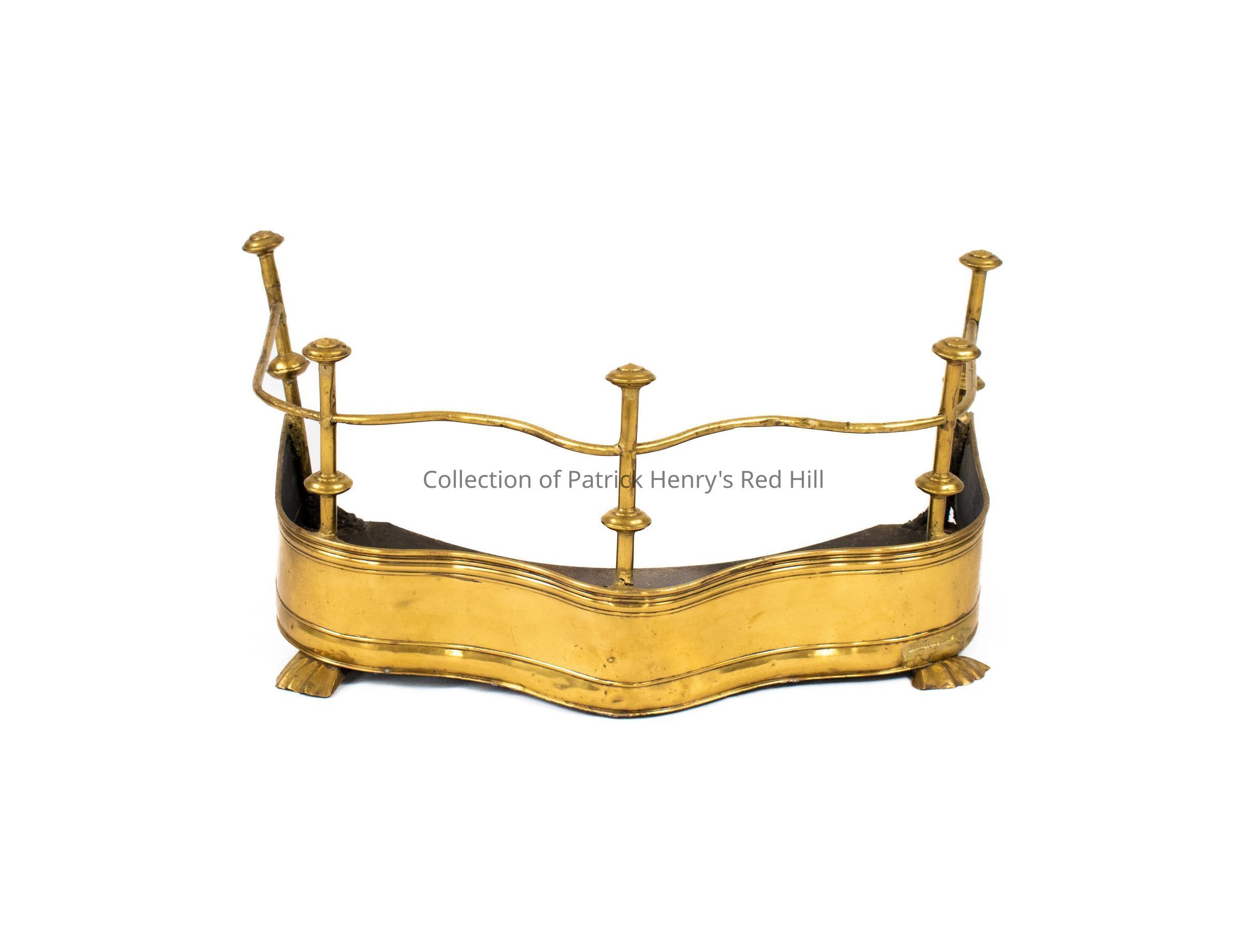Notes
This brass fire fender is said to have belonged to Patrick Henry. Fenders like this one were historically used to help keep logs from rolling out onto the floor. Although it is unusual in exact details and proportions, it is of the general sort imported into North America for ubiquitous domestic use in the latter 18th century.
Acquired by the donor, Rose Irvine, from her mother-in-law, Roberta Nolting Irvine (1879–1973). Roberta was the daughter of Emil Otto Nolting (1824–1893) of Richmond, VA, who exported tobacco and built the "Monticola" estate in Howardsville, VA in 1887. Nolting acquired many items of regional aesthetic and historical interest, including this fender.
It's possible this fender appears in the estate inventory of John Henry (1796–1868), youngest son of Patrick and Dorothea Dandridge Henry. The inventory was taken of John's possessions at Red Hill in 1868, and lists "1 And Iron Shovel & tongs & fender" worth $3.00. This group of items was then sold as part of an estate sale of John's possessions on February 12, 1868 to his son, Dr. Thomas Stanhope McClelland Henry (1833–1912). Thomas purchased the "And Irons, Shovel & Tongs & Fender" for $3.00. Emil Nolting may have then received this fender from Thomas Henry at a later date. No written evidence verifies this provenance, however.
The verbal provenance connecting the fender to Patrick Henry was well established by the early 20th century. In 1964, a note from the chairman of the John Marshall House (owned by the Association for the Preservation of Virginia Antiquities, now Preservation Virginia), Jean R. Riley, asked if the "Patrick Henry fender" might be given to Scotchtown. Rose Irvine responds, saying, "may go on loan still to Scotchtown." It is not known whether the fender was ever lent to Scotchtown.
On March 22, 1998, the fender was given to PHMF by Rose Irvine.
